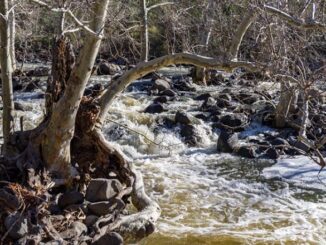
NEWPORT, Oregon, October 25, 2021 (ENS) – Oregon State University’s Marine Mammal Institute has been awarded a $2 million grant to collect data about distribution and density of marine mammals and seabirds that will be used to inform decisions about offshore wind energy development.
The surveys will allow Oregon State’s scientific team to develop species distribution models and maps for seabirds, whales, dolphins and porpoises to inform the siting and construction of offshore wind farms. President Joe Biden announced an ambitious offshore wind development program earlier this month.
Marine Mammal Institute Director Lisa Ballance is the lead investigator on the project, which includes visual and acoustic surveys in a region of the west coast from Cape Mendocino, California, to the mouth of the Columbia River on the Oregon/Washington border and west to the continental slope.
“We are excited about this opportunity,” Ballance said. “This funding will support strong basic science that will undoubtedly lead to new discoveries. Equally important, our science will be used to inform the wind energy industry.”
The environmental and wildlife data gathered through the research is critical for decisions about locating and permitting offshore wind energy development projects and will be used to help assess impacts as offshore wind development increases.
Development of offshore wind energy is a priority of President Joe Biden and the departments of Energy, Commerce and Interior have set a goal to develop 30 gigawatts of offshore wind energy – enough to power more than 10 million homes – by 2030.
The four-year project expected to start next spring will include visual surveys and passive acoustic monitoring of seabirds, whales, dolphins and porpoises during all seasons.
The researchers also will collect identification photographs of individual baleen whales, data from satellite-tagged whales and DNA profiles.
The data will provide detailed insight into whale behavior, population identity and the likelihood that the whales will return to the same location year after year.
“A solid understanding of what species occur where, how often and in what numbers is critical to informing human use of the marine environment,” Ballance said. “We are proud to be part of this blend of strong science informing industry in the context of sustainable use and stewardship of our oceans.”
Featured image: Off the coast of Oregon, two gray whales dive together, October 7, 2019. Oregon State University researchers are studying these gray whales, images and data collected under NOAA/NMFS permit #21678. (Photo courtesy Oregon State University)
© 2021, Environment News Service. All rights reserved. Content may be quoted only with proper attribution and a direct link to the original article. Full reproduction is prohibited.



